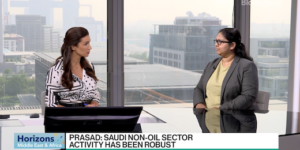The global economic meltdown has demonstrated that pan-regional financial systems that are heavily reliant on commercial banks for corporate funding are either potentially crisis prone or seriously impaired. This is particularly true if banks must suffer the pains of recapitalization, deleveraging, restructuring and de-risking, as is happening in most European countries.
By contrast, financial systems that are dependent on bond markets are enjoying more reliable and cheaper access to new funding resources. In the US, for instance, the average yields on junk-rated debt fell to a record low of below 6% in the first week of 2013.
Beyond the short-term and often volatile opportunities, recent economic history has shown that bond markets are naturally fungible as a leading channel of liquidity for governments, as well as public and private companies. Even those regions (both mature and emerging) whose banking systems are still sound display a structural trend towards strong bond market development.
The name of the game is capital market disintermediation, which will occur, sooner or later, either in a vicious or virtuous way.
It may be a case of the former for continental Europe, where the combined effects of the required accelerated deleveraging (as mandated by global capital standards) along with forthcoming “mark-to-market” of non-performing loans (NPLs), could drive to a strong and rapid contraction in banks’ commercial lending supply.
It may, more optimistically, be the latter for the MENA region, where banks enjoy a relatively better funding structure with more reasonable loan-to-deposit ratios, coupled with higher interest margins, nominally stronger capital base and higher profitability ratios.
Still, the case for the disintermediation of traditional banks’ funding channel is laid out due to a number of fundamentally safe and sound reasons:
- The regulatory case for deleveraging, and the effect of the forthcoming mark-to-market of NPLs on real estate lending (with particular reference to the UAE and Kuwait), will also hurt MENA commercial banks’ lending capacity;
- The high interest margin charged on corporate lending appears less attractive when compared with the true cost of credit. It is startling that a top-rated company in the MENA region borrows at an interest of 10-12%, while a subpar firm in the US at half the rate through junk bonds. Self-financing, other pockets of “shadow financing” and the international capital markets will start competing more aggressively as regional banks threaten the direct funding business. In particular, “shadow financing” and capital markets benefit from the comparative advantage of softer regulation, lower cost of funding and larger economies since these provide a variety of financing options.
Addressing the issue
The solution is to push for the development of local currency fixed income markets (both conventional and Islamic) in order to ensure stable access to new funds. This move not only creates a yield curve that will price all kinds of financial assets transparently, but also provides monetary policy tools and enables the development of risk management techniques.
Deeper bond markets in local currencies will likewise allow open economies to better absorb volatile capital flows. As well as provide institutional investors with instruments that satisfy their demand for safe and stable long-term yields, locally denominated debts can guarantee a stable source of capital and reduce financial instability associated with asset price .
Considering the heavy investments needed in MENA’s infrastructure projects, it is ideal to raise financing through securities backed by future cash flows from the infrastructure services, as is typical of project-financing schemes.
On macro-economic terms, the development of a strong, liquid and transparent local currency bond market would be highly beneficial for the economies of MENA. This will improve the optimal allocation of financial resources in the overall system.
As it stands now, the MENA nations lack the important ingredients of a well-functioning debt capital market. These elements include a credit rating culture, market transparency, benchmarks, long maturities, a broad spectrum of institutional investors and a derivatives market for managing interest rate and credit risk.
Disintermediation to benefit banks
Only recently, a credit default swap (CDS) OTC market has gained prominence, but it is still in its infancy. On micro-economic terms, the disintermediation to come could also benefit the banking system in at least two ways:
Firstly, the proactively controlled re-composition of MENA banks’ balance sheets, profit and loss accounts would prevent abrupt and negative impacts on their financial stability and value creation capacity. The loss in net interest margin from direct loans could be gradually replaced -at least partially – by the higher fees coming from debt capital market structuring and placing activities.
The deleveraging and de-risking of the banking system would liberate financial and commercial resources for redeployment in more innovative and value adding activities (from asset management to bank-assurance; from private banking to corporate advisory). It will also reduce credit charges as well as the formation of NPLs.
In order to achieve this, regional banks should consider the opportunity of building some smart investment banking capabilities: focusing internally on the product design and risk management activities while considering third party alliances for the more standardized ones.
Secondly, MENA banks could benefit directly from the development of an efficient bond market that could help them pursue a longer term and cheaper liability structure – therefore reducing the currently high asset-liability management (ALM) imbalance.
We feel that a medium-term notes (MTNs) market for domestic banks that are active in the region could be an achievable target for the short term and a first step in the right direction. Such initiative should be considered a high priority project for policy makers, central banks and regulatory bodies.
In order to strengthen MENA’s local bond market, governments must express strong commitment to implementing a proactive debt management program (DMP). Part of this scheme should include extensive marketing and communication effort aimed at institutional global investors.
The DMP aimed at the development of an MTN market for domestic banks should start identifying and supporting focused issuance programs for local banking champions, thereby helping them access international investors.
It could also consider the creation of a “bond of bonds”, which can pool together the issuance needs of mid to small banking players, thus creating diversification in terms of names, countries and sub-sector of activities.
Eventually, some form of credit enhancement through credit protection on the first loss or on specific senior and super senior tranches, could be considered and provided by government-owned financial guarantees and credit insurance entities.
Last, but not the least, money markets and financial derivative markets should be developed alongside the debt capital markets to facilitate liquidity management by both central banks and investors.
[This article was co-authored with Claudio Scardovi of AlixPartners and published by Zawya]





